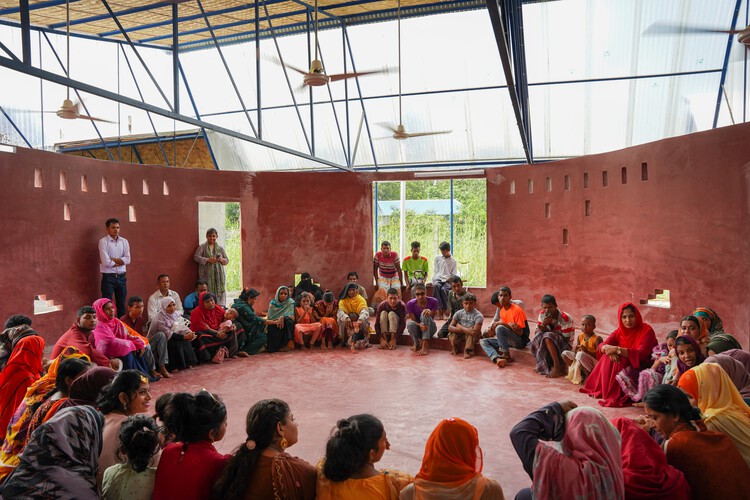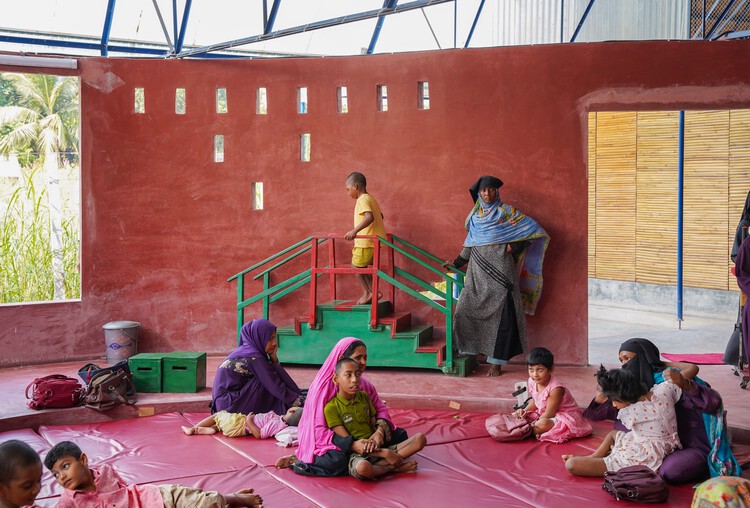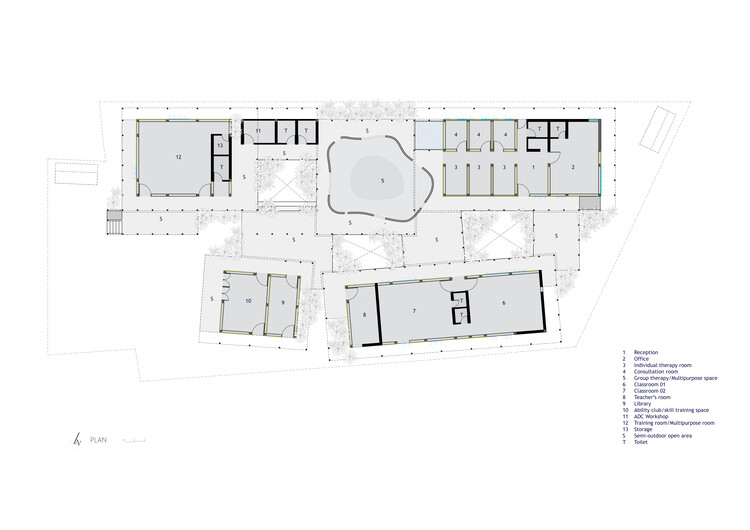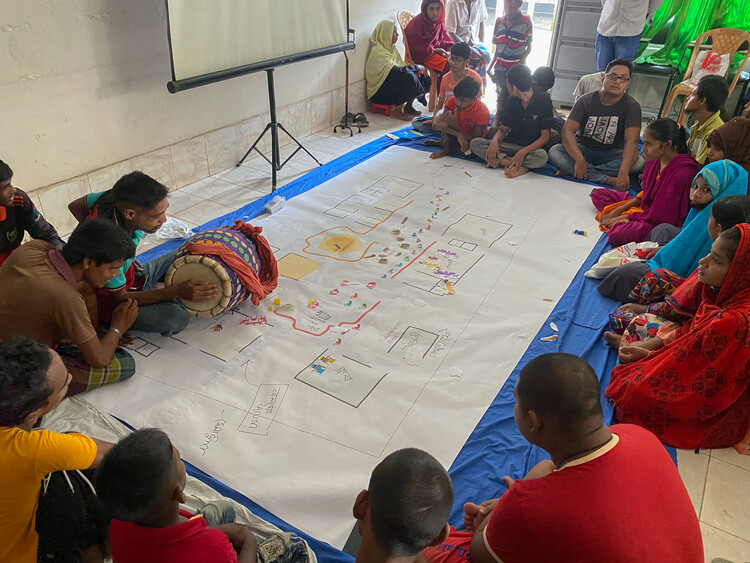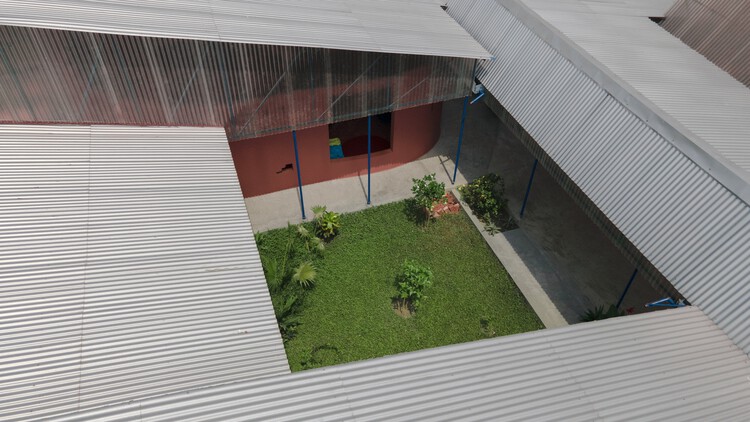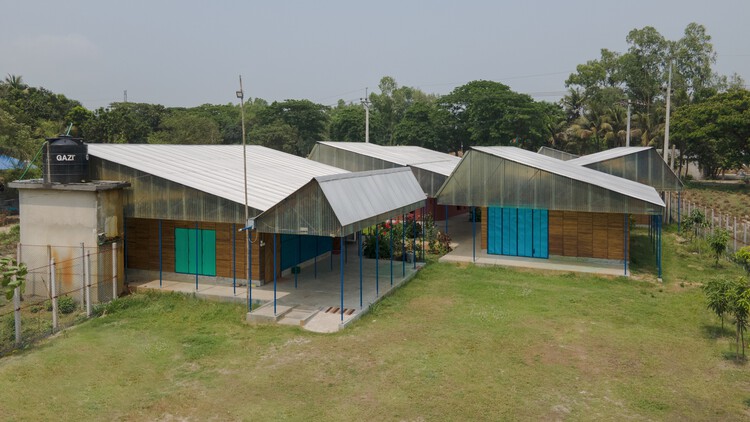A Spark of Purpose: Architecture Beyond Structures
The CSF Centre for People with Disabilities, created by Rizvi Hassan and located in Shahjadpur, Bangladesh, is a living example of inclusion, dignity, and community that transcends conventional architecture. This institution, which welcomes children with disabilities and their families with warmth, mobility, and acceptance, is more than just a building—it’s a dream come true.
CSF Global’s Mission: Respect, Rights, and Rehabilitation
A Bangladeshi non-profit organisation called CSF Global (previously the Child Sight Foundation) is dedicated to creating a rights-based environment that supports children with disabilities, particularly in rural areas where resources may be limited. The organisation finds children with disabilities, offers therapy treatments, and equips them for inclusion in mainstream education and society through cutting-edge techniques including the Key Informant Method (KIM).
Credit: Rizvi Hassan
Create with Love: How Rizvi Hassan Designed a Retreat
The Vision Achieved by Involvement
Instead of imposing a design, Rizvi Hassan worked with the kids, their families, and community people to co-create the area using a conversational and cooperative approach. Workshops, sketching sessions, and interactive planning—such as going over printed plans—were used to make sure the area represented everyone’s wants and goals, not just architectural ideals.
A Useful Structure That Is Comfortable
The center’s focal point is an Orbital/Group Therapy Room, a central, adaptable area that links therapy rooms, consulting and training facilities, classrooms (also known as “Children’s Heaven”), and an Ability Club for computers and the arts.
Design Incorporated with Nature
Gardens are a feature of the architecture, not an afterthought. The design is interspersed with four different gardens that provide sensory relief, tranquil outdoor spaces, and a living connection to nature—all of which are essential for mental, physical, and therapeutic well-being.
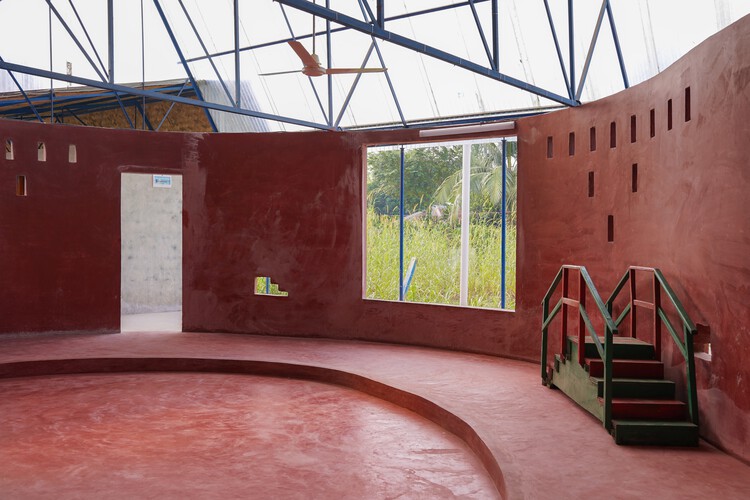
Credit: Rizvi Hassan
Rizvi Hassan is a socially conscious architect in addition to being a designer. Contextual reaction, local identity, and communal creating are the guiding principles of his work, which is found in community centres, refugee shelters, and cultural memory spaces.
Prestigious honours including the Aga Khan Award for Architecture (2022), the ASF Award (2021), and UN-OCHA recognition (2020) have been bestowed upon him, confirming his innovative contribution in socially conscious design.
Plan
A Hub That Exudes Belonging and Connection
This facility is neither clinical nor frigid. An atmosphere of playfulness, empowerment, and soft encouragement is conveyed by its textures, colours, layout, and user-inspired elements. Youngsters feel empowered as they climb, explore, and create. Families belong, not merely watch. Professionals and families travel connecting routes that are thoughtfully and lovingly created.
Credit: Rizvi Hassan
The Significance of Inclusive Architecture in Promoting Social Change
Rethinks Therapeutic Environments:
Encased in careful architectural logic, it serves as a school, a centre for healing, and a meeting spot.
Models Inclusive Design:
Inclusion is made visible and experienced through accessibility, adaptability, and sensory richness.
Inspires Future Practice:
This project lays out a model for how architecture, especially for underserved populations, can promote joy, healing, and a sense of belonging.
Credit: Rizvi Hassan
The Effect of Ripples: Beyond the Building
Although the initiative’s physical hub serves as its focal point, its effects extend well beyond its boundaries:
Community Awareness:
By establishing an inclusive institution in the heart of the city, it dispels long-standing stigmas associated with disabilities and encourages visibility and dialogue in place of silence.
Economic Opportunities:
Local artisans, therapists, and trainers are involved in the building and ongoing operations, which increases employment in the community.
Replication Potential:
Government agencies and non-governmental organisations are researching the participatory model here in hopes of implementing it in other Bangladeshi rural regions.
Impact over Generations:
Children who witness inclusion as the standard are more likely to support equity and accessibility as adults.
The CSF Centre is really a catalyst for cultural change rather than merely a place to visit.
Credit: Rizvi Hassan
Concluding Remarks: Establishing Honour, Brick by Brick
Rizvi Hassan’s CSF Centre for People With Disabilities challenges us to reevaluate the ways in which architecture benefits people. It transforms the modest act of construction into a joyful, inclusive, and just gesture. Design is shared, understood, and embraced here rather than imposed.
This centre is a shining example for anyone interested in inclusive architecture, accessible design, or community-engaged projects. Do you want a summary that is suited for social media or a version in Urdu for a larger audience? I’d be happy to assist.
For more content like this CLICK HERE
Reference
CSF Center for People With Disabilities / Rizvi Hassan – Architectural Digest – News Magazine

